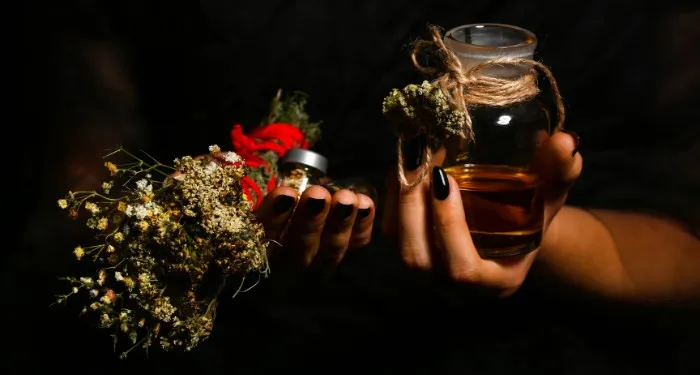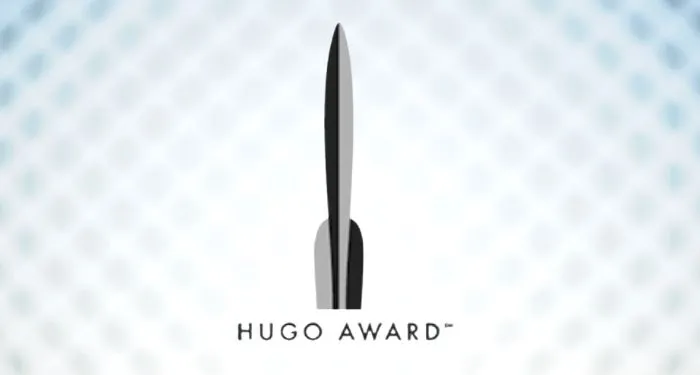The best days to work a salmon net are dry and bright. Bankside willows tilt from summer green to autumn gold. Light wind, no longer warm, riffles the river’s surface in arcs of silver. Late summer in the Arctic has as many days of lashing rain as it does sun, days when even layers of wool under rubberized overalls and jackets—slime gear, we call them, after their impermeable gummy film of salmon epithelia—cannot stop the cold. But even a wet day is good if the net is heavy.
The salmon roil against the nylon mesh, gill plates pulsing. These fish left the Bering Sea six to eight weeks ago and have swum across Alaska without stopping, a thousand miles against the Yukon River current and almost three hundred more up this tributary, the Porcupine, into northwestern Canada. Drawn back to lay their eggs and die in the streambeds where they hatched, they have not eaten since leaving the sea. They swim against time as well as water, against the pace of their own decomposition. Ragged fins and unhealed wounds mar the pink-and-green mottle of their skin. Sometimes the net snags the pale body of a fish fraying into the river, already dead.
Living salmon are powerful even in decay. More than twenty years ago, during my first weeks in the Arctic, I learned this from their thrashing kypes, the hooked jaws the males grow in freshwater to battle for spawning dominance. My hands were new to salmon then, my fingers constantly snagging on needle teeth and stiffening with infection.
This was not what I expected when I moved to the Vuntut Gwitchin village of Old Crow in northwestern Canada, just fifty-odd river miles east of the Alaska border and eighty miles north of the Arctic Circle. The village of some 250 is relatively new; as in the other Gwich’in communities in the Northwest Territories and Alaska, settled living is a colonial addition. But the land has been Gwich’in as far back as stories reach.
I came to it at eighteen. Driven by wanderlust and an unreconstructed romantic view of the Arctic, I had decided to forgo university for a few years to learn dogsledding. But sleds need snow and I arrived in summer, in time to bleed with salmon. Some of the fish we caught were for people, the Chinook salmon and whitefish. The mushing teams ate the chum, which most people in the village called dog salmon. Or just dogs—as when, boating back to the village gory and exhausted, you might hear someone on the bank call out, “Are the dogs running today?”
Now, more than twenty years after I first fished in the north, Are the dogs running today? is no small question. Dog salmon pulse twice a season up the Yukon River: the summer run and the longer-swimming fall run. Fall chum numbers have always fluctuated. Recently they have threatened collapse. In 2020 only 260,000 swam into the Yukon River, down from 1.8 million just three seasons before. In 2021 their numbers dropped further, to 145,000. All fishing ceased. As of the first week of August this year, just over 100,000 fall chum have arrived in the lower Yukon’s waters, a number expected to double at most. In a watershed that drains more than 300,000 square miles, home to dozens of Indigenous communities, fall chum nets have scarcely touched water for five years.
The term “species loss” is, like “climate change,” a bloodless abstraction. What it names is not. Any single species—here chum, but where you live perhaps a moth or a newt or an oak tree—is greater than itself, carrying in its continuance a dense and specific set of relations. Along the Yukon River and its salmon-bearing tributaries, those relations run through dogs, our oldest domestic companions. What would it mean for the dogs to stop running?
*
A dog team has no reins, no spurs, and a brake that works only when the snow conditions are right. You, the musher, stand on the back of the sled’s runners, pulled forward into the land by six, eight, sometimes twelve or fourteen dogs running two abreast. The lead dogs are your hope of control: it is they who turn left (haw!) and right (gee!) at your ask; it is they who set the pace.
At first I could not imagine the dogs listening to me. These were not the pets of my Iowa upbringing. They lived, like most village dogs, in a yard hacked from the taiga, with spruce trees serving both as shade and as poles for their chains. Stanley Njootli, the Gwitchin musher to whom I was apprenticed, showed me the basics, after which I tended to the dogs mostly alone, weaving with a pail of moose broth among the thirty-five rangy, wolfish animals and the ankle-breaking holes they dug down to the permafrost. They watched, wary. Yowling with summer boredom. A few were open to petting. Some sat on their wooden houses as if waiting for me to become useful. One, pitch black with a puckish ruff, would urinate with precision into the tops of my boots if I strayed too close.
Initially, they were mostly distinct to me because of their sizes and colors: a small gray dog, a massive silver-gray beast, a blue-eyed brown dog with a hound’s ears. All were mutts, bred not for their looks but for a keenness to work. In any Yukon River village, mushers can tell you the bloodlines in their teams—a descendant of Attla’s leader, a Redington dog. Most villages in the Yukon drainage are accessible by air or water, not road; in summer, dogs were moved by boat, their lineages traded upstream and down in the long hot days before the salmon arrived.
But then, winter. Mushing is a practical discipline—can’t learn about it from a book, as Stanley told me more than once—so there was nothing for it but to do. Dogs howling with first snow. Preparing to run is a dance between the dogs—digging, leaping, yowling with impatience—and the musher trying to keep time. The sled, tied down, shaking as the harnessed dogs are hitched to the line: tugline to back of harness, neckline to collar. Leaders first. Fingers stiff in the cold but sweat dripping under wool in the rush. Pull the knot to release the team and the canine din bursts into silence, their breath steaming into the cold air above the gentle cadence of paws.
Within a few weeks of our running together, the dogs resolved into individuals based on more than their coat colors. Sergio, the small gray lead dog, put her head through her harness gently, settling the padding against her shoulders. Thunder, a black-and-white shaggy wiggle, had to be nearly wrestled to the ground to harness, he was so excited to run. Some angled to the left while in harness; others ran straight ahead. Shade disliked running next to other female dogs. Spike would nip at his partner if the sled slowed. Cobalt hated running next to Lightning. Scout stopped lifting his leg at my boots.
I ran one of the multiple dog teams in Old Crow. Thousands more dogs pulled throughout the watershed’s villages, in Alaska and Canada—hauling wood, checking traplines, carrying river ice in the winter to melt for the best-tasting drinking water. A few people trained their teams for big-purse races beyond the village, sprint events like the Open North American Championships or thousand-milers like the Yukon Quest. At New Year’s and Easter nearly everyone with a team in the village came out for local races, which filled the air with cheers and dog din not just in Old Crow but from river mouth to far tributary. These races sidestepped instrumental mushing—no prize money or firewood pile but a plastic trophy and the hard fun of it, and the satisfaction of having a story to tell around the pot of caribou head soup in the community hall afterward. Did you see the moose tracks at the creek. Isn’t Harold’s leader fast. Have you heard the rumor there’s a musk ox down by the third bend in the river.
That first winter spooled out with the sensation of the land moving under my feet and through my hands. In December and January, when there is no sunrise for several weeks and all running is with a headlamp, I realized that the lead dogs had become part of my sight. By spring, which in the Arctic is full with snow until May, the land grew rich in long dusks and dawns. The dogs’ ears and noses sensed things I could not: a coming storm, the bear early from her den. Their glee or hesitance carried down the lines to my hands. Sled, dogs, and human, all distinct but united, held together through dark spruce needling against a sky moon-bright and purple-green with aurora. Mushing requires physical knowledge—how to care for dog feet or repair a sled stanchion—but none of it works without trust.
The trust between human and canine is long-earned. Archaeologists have not settled on a date, but dogs made themselves distinct from wolves 15,000, 30,000, perhaps even 100,000 years ago. They have pulled sleds in Siberia for ten millennia. Over this expansive time, dogs and people have coevolved an unusual, physiological level of attunement: canines can sense our sadness and joy and respond in kind; people can read aggression in the angle of a lip or the cant of a tail.
Sled dogs pull best for people they know, a relationship that requires consistency and care. Races have been lost because a musher yelled in frustration and the team refused to run. Months after meeting my team, I went home for Christmas, in the middle of mushing season. When I returned after several weeks, even Sergio would gee when I said haw. Some of the dogs turned their backs on me when I approached with a harness. By breaking our regular days together I had fumbled their trust.
Part of that trust was earned or regained with salmon. Every day I chopped frozen chum, each a twenty-odd-pound oblong of fat and protein and calcium, and cooked them, sometimes with rice, into a potent slurry that the dogs howled for, circling their wooden houses on their chains, eating with a fervor they matched only when you showed them a harness. Are the dogs running today? Salmon is dog because salmon becomes dog.
*
Climate change is often expressed as an average: the planet is 1.3 degrees Celsius hotter now than it was before industrialization. But the heat is unevenly distributed. Because of factors ranging from increasing water vapor in the atmosphere to decreasing ice in the ocean, Arctic heating is particularly fast. The North Pacific and the Bering Sea, where dog salmon mature over two to five years, are far enough north that they are warming two, three, even four times faster than the global average. The years 2018 and 2019 were exceptionally hot, with the sea surface of the Bering Sea one to five degrees Celsius warmer than the norm. The years since have varied from that peak, but none would have been normal for most of the twentieth century.
At sea, heat is provoking a roiling ecological shift with no clear end. Toxic algae flourish. Puffins, auklets, shearwaters, northern fulmars, kittiwakes, and sea ducks die at sky-silencing rates. New fish, predator species like walleye pollock and Pacific cod, have moved into the warmer water. In the hottest years, young chum resort more often to eating blooms of jellyfish, the wispy tissue too short of fat to power them back to their natal streams. Heat might make chum more vulnerable to Ichthyophonus, a parasite that at its most severe turns their organs ghostly white during their upstream migration. In 2019, a summer of ninety-degree days near the Arctic Circle, heatstroked salmon flush with unlaid eggs died by the hundreds in the Yukon River and its tributaries.
But the salmon decline in the Yukon River basin has no single cause. The gold rush, for all its association with century-old Jack London stories, has not ended. At some mines gold is leached from stone with cyanide; last summer an open-pit operation high in the Canadian part of the watershed spilled thousands of cubic meters of contaminated water into tributary streams. Once in the Yukon’s capillaries, the cyanide joins old pollution seeping from US military Superfund sites, and residents fear future pollution will come from the test wells the oil company Hilcorp is drilling in central Alaska’s Yukon Flats. Some streams are bright orange with the minerals and trace heavy metals that leach from thawing permafrost along with river-thickening silt. After salmon eggs hatch and the minute glassine fish swim from their gravel nests, gravity pulls the smolts through this fraught water to the Bering Sea.
There and in the wider North Pacific, they join an increasing number of larger and stronger juvenile chum from hatcheries in Russia, Japan, and Alaska. These are usually sold as “wild-caught keta,” perhaps because the Russian name sounds more palatable than “chum,” in the frozen food aisle alongside fish sticks made from pollock, billions of pounds of which are caught in the Bering Sea each year by nets that can also, unintentionally, pull in chum. Alaskan pollock is by volume the largest fishery in the United States, one praised for its sustainability. There are no limits on its bycatch of dog salmon.
A certain number of chum have always died between hatching and spawning: caught by other fish, by eagles and bears, by nets set to feed dog teams. Historically, salmon supported such a profusion of lives and still ran in numbers that ranged, depending on the year, from the hundreds of thousands to the low millions. Now hungry bears prowl village garbage cans, and eagle nests stand empty. Such local relationships with salmon have been transformed and expanded by the pressures of industrial vices: you might wear gold that began here; any gasoline you burn has consequences here; you might eat a keta filet or pollock reconstituted as artificial crab. Spend enough time living, as so many of us do, with the market as the primary arbiter of our relations, and such choices may be taken for abundance.
*
Industry and its products are a wild anomaly in the far north. In Old Crow people my parents’ age remember when the first freezers arrived in town. Snowmachines—vehicles running on single rubber treads powered, in the early days, by four-stroke engines—trickled into villages in the 1960s. Newspapers in Alaska and Canada hailed the coming liberation from dog transport. Machines were fed by gas can, not by weeks bent over salmon nets—“a release,” one academic wrote in 1969, “from the economic drain of the dog team.”
Frustration with dog teams was not new. I find it running through the colonial archive as far back as the 1830s and 1840s, when emissaries of the British Empire mushed west toward the Yukon basin and Russian imperial agents came east over the Bering Sea and moved up the Yukon. A Russian lieutenant complained that dogs required consistent attention and experience from their mushers; both were lacking at his post on the lower river. Members of a British expedition searching for Sir John Franklin’s lost ships were so unwelcome on Indigenous lands that they could not buy fish for their teams. Frederick Whymper, a seasoned British traveler who “always succeeded in making a good dog my friend,” was “much chagrined at my want of success among these animals.” Prospectors lured north by the promise of Klondike gold were confounded by dogs that would not pull or listen. After the United States and Canada took on the colonial mantle between 1867 and 1870, winter mail service relied on dogs. The Canadian North-West Mounted Police tracked the strength of the salmon runs that fed their patrol teams.
Across language and decade, many outsiders described their dogs with deep affection. The ambition of empire and nation, however, is to control space, and for this dogs were most important as transport—as a way of collapsing the time necessary to cross a mile. Dog speed depended on a host of variables beyond easy control: snow conditions, paw conditions, emotional conditions. The early snowmachines might not have been much faster than a musher’s five or ten miles an hour, but care was reduced to changing spark plugs and oil. Any driver could substitute for any other. Time is a cost, and care is time. By this logic, the sled dog’s extinction was inevitable.
The dogs I ran were descended from Gwitchin canines mixed with dogs that Hudson’s Bay Company fur traders mushed west or that had been imported by gold prospectors. They were bred in the twentieth century to work and also race; running was a desire in them as deep as eating, deep enough that if I bounced or slipped off the runners, the team would carry on, gloriously free of my weight. Holding on was mushing’s first rule. The second was not to panic if the dogs streaked off into the gloaming. I always carried matches.
One spring, with the dogs in particularly strong form, we came flying around an icy bend and the sled flipped. The snow hook, twelve or so pounds of curved iron used to anchor the sled, bounced free and hit me above the right eyebrow. I remember consciousness tunneling into black, my final thought about the length of the walk back, alone. When I came to, squinting through a swelling eye socket, the dogs had me in a half-circle, peering down. A few whined. My face was damp from their tongues. Somehow they had known that it was not incompetence but injury that had loosed me from the sled.
That was more than three decades after snowmachines became common in the Yukon basin. Airplanes brought our mail. There were a few trucks in town. Everyone I knew had a snowmachine; I drove one daily in winter to haul frozen salmon and make runs to the village store. And yet many people still kept dogs. Some of the reasons were strategic: gasoline is expensive; mechanics can be hard to find in small villages. I have never felt a rage more pure than at a Ski-Doo, engine ticking with heat but uselessly mired in soft snow. Dog teams do not get stuck.
But dogs also care back. They stop to check your wounds. Reason enough to choose the time they take, the mutual work. Mushing is not only about speed, or even about transport. To mush you need balance, a tolerance for smelling of dog, and respect for cold deep enough to blacken cheeks and noses with frostbite. You need the strength to fish in summer and push sleds up hills in winter. You will frequently hurt, somewhere. You will also feel, well—what other word is there for this sensation but love.
*
Along the Porcupine River, as along the Yukon and the other tributaries, Old Crow families kept bankside cabins close to good salmon eddies, seasonal homes where chum were made winter-ready as soon as they were pulled from the net. We hauled salmon in purple Rubbermaid totes from the boat to tables made from plywood and two-by-fours, covered with fresh cardboard to absorb some of the slime. The fish work had a rhythm. Tip of the knife to the taut belly—pressure, gentle down the handle and blade, till the puncture’s release—then pull the organs free. Roe spilling, glowing golden orange in the sunlight.
A story would start: whose grandparents had the fastest dogs; whose great-grandparents had their traplines along which streams; a year the river ice went out with such force it swept a fish camp two bends downriver entirely away; the valley where three bears hunted together, like a wolf pack.
(The tip of the knife running now up through the ribs, popping gently, half splitting the salmon, leaving it open for air to keep away rot.)
A long-ago year when summer never came and the salmon did not run and the country was hungry. The terror of meeting a moose cow on the trail, waiting to see if she would trample the team or flee with her calf. If there’s a new president in the US, will there be more oil drilling in the Arctic? The dog blankets that teams wore at the turn of the last century, embroidered with lush wool flowers and hung with bells.
(The knife behind the gills, cutting a hole near the spine to hang the salmon on a willow stick. Five salmon to a willow, then seventy or eighty pounds lifted onto a spruce-pole rack. Tend the fire below, just enough smoke to keep away flies. Another fish. Knife-press to cool slick of skin. Your hand slips and snags on the salmon’s teeth, cutting deep enough to scar a pale ridge indelibly into your finger.)
Twenty years ago, ten years ago, even five on some parts of the watershed, fish camps were ubiquitous on riverbanks from origins to ocean. Tlingit camps, Koyukon camps, Yup’ik camps. In those camps not all the stories were in English; grandparents spoke their languages to their grandchildren, who learned young how to care for fish, to not drop them, to not let them spoil. To offer prayers: some with words and some in the form of never letting a death become waste. Care of the dead is how to assure the living will run again.
I did not understand everything I heard in camp then, even in English, and as an outsider I never fully will. But it was clear even to me that no snowmachine or truck could substitute for dogs. Dog is salmon and salmon is story.
*
A Yukon River without salmon is not beyond imagining. Everyone I speak to along the river feels this in the emptying waters. Even the trees know it, missing the ocean-born nitrogen that salmon carry inland and, with their deaths, turn over to bankside roots.
The official response is both sprawling and fragmented. No single agency or country oversees the full life cycle of a Yukon River salmon. Canada has limited influence on the river downstream of the border with Alaska. In Alaska the river is (mostly) managed by the state. A treaty requires the US and Canada to coordinate policies binationally, but only once salmon enter the Yukon River; Alaska must let a minimum number of salmon cross into Canada. At sea, chum within two hundred miles of the Alaska coast are regulated (mostly) by the US federal government. As a result of land claims negotiations in Canada, First Nations have considerable autonomy to decide when to fish or not, even during a crisis; in Alaska, Tribes must follow state law. These are just the organizations with salmon as their remit. Carbon emissions, international hatcheries, and mine runoff are discussed elsewhere, if at all. The dark joke at fishery meetings is that there are more acronyms in salmon management than there are fish.
To a salmon these divisions are a fiction. To human action it is confounding. A system that separates fish from water, saltwater from freshwater, and all water from the atmosphere narrows what remedy fishery managers can offer: streambed restoration, studies of diseases and ecosystem change, and—mostly—decisions about how many fall chum people can kill.
When they can kill none in-river, our economic system offers substitutions. Commercial dog food, particularly brands like Inukshuk and Redpaw that are nutritionally robust enough for working dogs, can cost almost a hundred dollars per forty-four-pound bag. In any village not connected to a major road, add a dollar or two per pound for air freight. At minimum a dog team costs thousands of dollars a year, for vet care and harnesses and the booties they wear to keep crystalline snow from cutting their paws. Replace salmon with kibble, and the price can be in the tens of thousands, too expensive for many families. And no bag of kibble comes with summer afternoons spent cutting salmon.
At few places do such afternoons feel more distant than in the windowless rooms of the Egan Center in Anchorage, where the North Pacific Fishery Management Council met this February. The meeting was one of many that villagers from Alaska and western Canada have been attending, organized in Facebook groups and through NGOs like the Yukon River Drainage Fisheries Association. Some of the work is partitioned by the border: Canadians argue for stricter mining regulations to prevent heavy metal contamination and habitat degradation and present comments on dam removal; Americans take seats on the Alaska Fish and Game board or file lawsuits demanding better studies of the salmon at sea. Delegations from both countries attend meetings on salmon policy and the Conference of the Parties climate summits. Caring for salmon once meant fishing with respect and prudence. Now it can also require full-time e-mail churn.
In Anchorage the focus was on chum bycatch and on whether the council should impose limits as they have for Chinook salmon. More than 150 people waited, sometimes for days, to testify for as short as three minutes. Many had flown hundreds of miles from their villages. Pollock fishers, some with ties to communities at the Yukon’s mouths along the Bering Sea coast, spoke to the burden that chum bycatch restrictions would impose on their already-marginal profits and reminded the audience that genetics indicate the majority of dog salmon caught in pollock nets come from hatcheries, not the Yukon basin. But much of the testimony was less statistical. Over hours, speaking from thousands of miles of rivers, people attempted to reassemble their fish from the pieces into which regulation and the economic system had fractured them. They asked the council to see that their lives and the lives of salmon are indivisible, a link to generations far back and precious unto themselves. That salmon is family and work and land and dog.
The North Pacific Fishery Management Council has yet to decide if it will set any dog salmon bycatch limits. As I write, the chum are again swimming against time. The sky above them is orange with wildfire. There is talk of uranium mines to come on the coast of the Bering Sea. In this, what may be the coolest summer of the rest of your life, Canada is far from meeting its emissions reductions under the Paris Agreement, the international effort to keep warming under 1.5 degrees Celsius; the United States has abandoned the effort altogether.
What will let the salmon flourish? Alaska’s commissioner for fish and game has invoked the possibility that de-extinction technology may be necessary for Chinook salmon, a sort of desperate faith in substitution through resurrection. There are more possible legal efforts, more streams to remediate. There are also actions like the one that Indigenous communities offered this June, when they gathered at community halls and riverbanks from the Canadian headwaters far into Alaska in a coordinated moment of prayer for the salmon.
It was an act not of policy but of first principle: withdraw care and consistency and the dogs will stop running. It also resonates far beyond the Yukon watershed, a reminder of something that anyone who has ever loved knows. Deep relationship is a sensation of the particular, held in the eager tilt of a lead dog’s ears before a run or the feel of an old scar left by a salmon’s tooth. Such particulars are beyond substitution. At stake in the tumultuous century to come is how fast and how completely we will have to exchange the new for the beloved.























 English (US) ·
English (US) ·